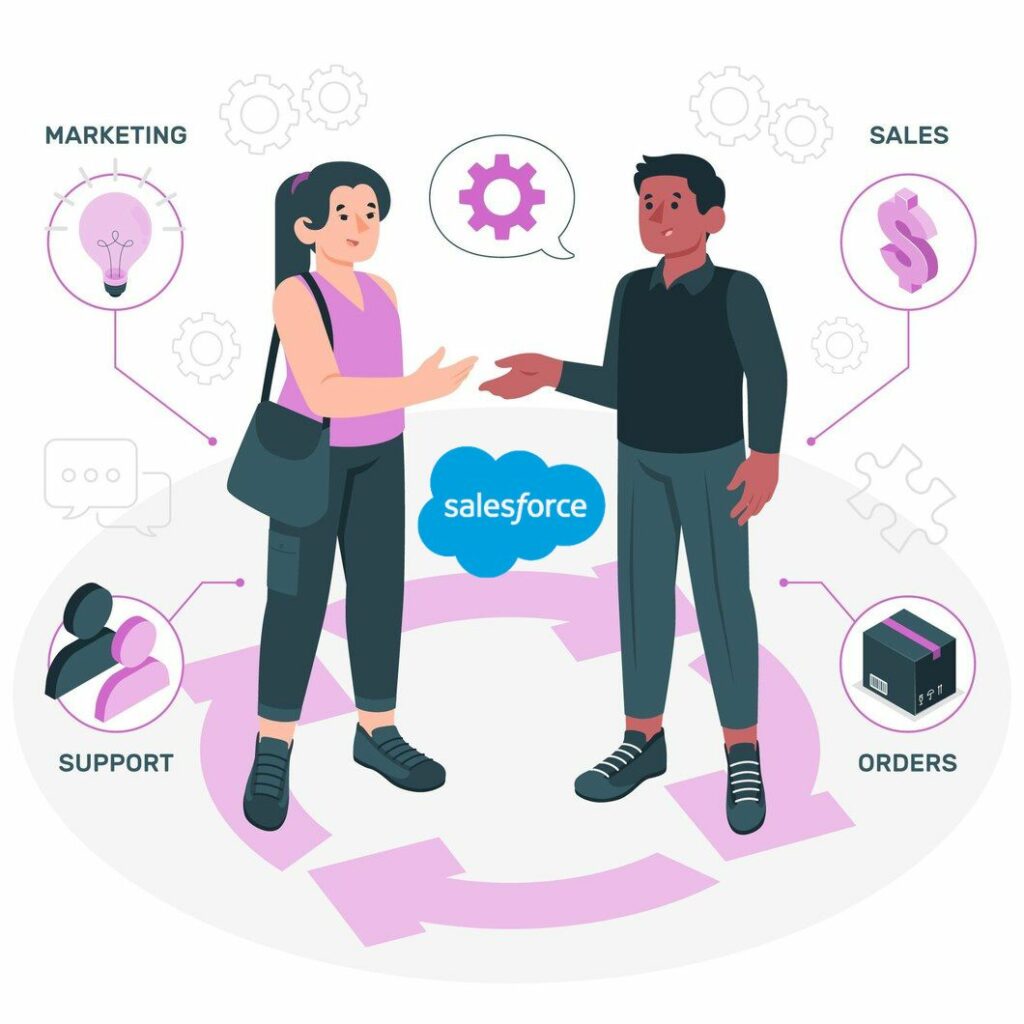- Home
- About
- NetSuiteNetSuite
ERPNetSuite
ERPNetSuite
CRMNetSuite
CRMNetSuite
PSANetSuite
PSANetSuite
EcommerceNetSuite
EcommerceNetSuite
OneworldNetSuite
OneworldNetSuite
SuiteSuccessNetSuite
Success - Industry
- ServicesNetSuite
CustomizationNetSuite
CustomizationNetSuite
ImplementationNetSuite
ImplementationNetSuite
IntegrationNetSuite
IntegrationNetSuite
TrainingNetSuite
TrainingNetSuite
MIS ReportingNetSuite
MIS Reporting - Integration Tool
- Blog
- Career
- Contact
Understanding Different Item Types in NetSuite
Understanding Different Item Types in NetSuite
For any business, buying products and services from vendors and selling them to customers is the main activity. If you are using the NetSuite solution, you would have noticed these products and services you buy and sell are recorded as ‘Items’.
When you have to make entries of these buying and selling transactions in the NetSuite solution, you must select from the various item types. The selection might seem overwhelming because the NetSuite system has 20 different item types. You must ensure to make the right selection to avoid errors in your inventory management practices.
This article will give detailed information on each item type to facilitate differentiation between them. You will also get to know the use cases of each item type for a clearer understanding.
The item records in the NetSuite solution include the following:
Item records that track physical items
Inventory Items in NetSuite
The physical goods that businesses buy and sell are called Inventory Items. The record of Inventory Items in NetSuite helps you track your inventory value and quantity.
You can enable the features to record your Inventory for the kinds of goods you buy and sell. When you buy the Inventory Items, you must record changes in the Asset Account and Cost of Goods Sold (COGS) Account. On the sale of Inventory Items, there are changes in the Asset Account and Income Account in the NetSuite system.
The information on the value of Inventory on hand is recorded on the Balance Sheet. The Income Statement mentions the profit or loss on selling these items. The related accounts also reflect the changes whenever you update or edit the item records.
Serial Numbered Items in NetSuite
Companies assign a serial number to each item to track physical inventory items easily. If you want to search for details on specific items, check their status, or receive an order, you can use the Serial Numbers in the Search function.
While entering the items list in the NetSuite solution, you must enable this feature to create serial numbers. The serial numbers for Inventory on hand items are unique. But you can re-use the serial number of a previous item that has been sold and is not on hand.
Once these Serial Numbered Items are bought and sold, relevant changes occur in the related Accounts. These Accounts include COGS, Income, and Inventory. You can also view items during the entire lifecycle – quantity on hand, quantity on order, quantity committed, and reorder point.
While buying, selling, and processing transactions, you must make relevant changes in related accounts. You can also add custom information for specific Serialized Item Records in NetSuite. The additional information helps you monitor the items based on those custom records.
Lot Numbered Items in NetSuite
Lot Numbered Items are similar to Serial Numbered Items, except that in this case, a group of products or a specific quantity of products is allocated a Lot Number. This record in NetSuite assigns a particular number to a group or quantity of items to help track those items’ purchase, sale, and stocking.
For example, you buy some dairy products from a supplier, and all of the items must be consumed within two days. You can collectively allocate a Lot Number to this group of dairy products and add notes, like the expiry date. Now, you can track each item in that group to see if they are sold before the expiry date.
Drop Ship Items in NetSuite
Drop Ship Items are items not processed in your inventory. It means that you do not get these items delivered from the supplier to your warehouse; direct delivery to the customer is facilitated. Drop Shipping allows you to minimize the order-to-delivery cycle time, thereby streamlining your inventory.
Such Drop Ship Items affect your COGS and Income accounts in NetSuite but not your Inventory Asset account. You are not supposed to receive these items in your inventory. They are not considered Drop Ship and will be recorded in the Inventory Asset account if you receive them.
In your item records, you can mark them as Drop Ship Items. When you add these items in a Sales Order, it is set for drop ship. Once approved, the Purchase Order is generated in NetSuite with details on the preferred vendor and the customer’s shipping address.
Special Order Items in NetSuite
Special Order Items are customized items or items that do not follow the usual inventory processing. If your vendor sells customized items, then you track these items as Special Order Items. When the vendor sends you the custom item, only then your sales order is fulfilled.
Another case is just-in-time items, where you place an order to your vendor only when a customer demands it. Thus, you do not have to store the stock of such items, saving your storage space and money.
Receipt and sale of Special Order Items affect your COGS, Inventory, and Income accounts in NetSuite.
Non-Inventory Items in NetSuite
Non-Inventory Items are items bought and sold but never required to be stocked. These are characterized as:
- Non-Inventory Items for purchase – You purchase these items but don’t sell them. For example, office supplies. These can be recorded in purchase orders and vendor bills.
- Non-Inventory Item for sale – You can buy, sell, and consume them. You can record these items in invoices, sales orders, and cash sales. They are not stocked in inventory or added to purchase orders.
- Non-Inventory Items for resale – You do not store these items; you buy from vendors and sell them to customers by getting them directly delivered from vendor to customer.
Records of Items for which you do not manage a physical inventory
Service Items in NetSuite
Service Items are items for which you monitor time and, thus, record billable hours. They are three types:
- Services for purchase – Your buy but don’t sell to customers.
- Services for sale – You don’t buy but sell to customers.
- Services for resale – You buy and then sell to customers.
You enable or disable Advance Billing and Advanced Shipping features based on the type of Service Items. When you enable both in the NetSuite system, it means the item is for resale. When you enable only Advanced Billing, it is services for purchase; when you enable only Advanced Shipping, it is services for sale.
Download Items in NetSuite
Download Items are items your customers purchase and download from the web store. For each item downloaded by the customer, you can charge customers. In some cases, a License Code is required to be added to download an item.
Gift Certificates in NetSuite
Gift Certificates are items for which customers buy store credit and gift it to someone. While purchasing any item on the web or physical store, the recipient must enter the authentication code to use the credit in Gift Certificates. You must enable the Gift Certificates feature on NetSuite before using it, and the code becomes active based on set preferences.

Item records that assemble several items into one unit
Item Groups in NetSuite
One Item Group includes several individual items. The Item Group needs to be purchased or sold as a group; you cannot sell individual items in it. The individual items’ prices define the Item Group’s price.
There can be taxable and non-taxable components in the Item Group. You can print the Item Group on NetSuite individually with the description or all the members with descriptions, prices, and quantities.
Kit/Package Items in NetSuite
You can create Kit/Package Items by adding individually-sold items in one package. This is primarily done to encourage customers to buy the components as a kit at a lesser price than the individual items.
You can add any item type in your Kit, such as assembly, non-inventory, inventory, service, gift certificates, etc. You can assign several price levels to the Kit, notwithstanding the prices of components. If the Kit/Package is partially fulfilled, the quantity on the printed invoice will be zero.
For tracking inventory, you have to monitor individual components. When the Kit is sold, your NetSuite record displays it as revenue for the Kit and not for individual members.
Assembly Items in NetSuite
Assembly Items are items created by combining your stocked raw materials. Several components make the Assembly, but it is considered a single item. NetSuite records the stock for each member as well as for the Assembly Item separately.
Whenever you manufacture the Assembly Items, maintain records of the increase in Assembly Item stock and decrease in component items’ stock. The price of Assembly Items is not dependent on its member items’ prices.
NetSuite records the purchase and sale transaction with changes in the assembly’s COGS, income, and asset accounts. The component accounts are separate from the Assembly Item accounts
Item records that help handle selling and buying transactions
Discount Items in NetSuite
You create Discount Items to apply discounts on sales transactions. You can apply discounts to line-item or to all items in a transaction. You can use Discount Items to monitor discount amounts without impacting the inventory valuation.
You can also link a customer with a discount coupon or promotional code to make the Discount Item available to them. NetSuite records the line-item discounts or transaction discounts as per the user’s choice. NetSuite solution records the transactions and reports for Discount Items as:
- Amount
- Amount (Net of discount)
- Amount (Gross before discount)
The values differ based on whether a posting or non-posting discount is applied.
Subtotal Items
Subtotal Items means the addition of all the items above it. For example, you add two items and want to add an equal discount percentage to both items. You will subtotal the two items and then apply a discount in the calculations on NetSuite. Thus, Subtotal Items give you added flexibility in calculations while applying discounts to transactions or line items.
Markup Items
Markup Items are the ones on which an additional charge is imposed, which increases the price. Thus, you can monitor markup amounts without impacting the inventory valuation.
You can add markup cost to the line-item or total order on NetSuite. The markup amount can be a flat amount or a percentage. The markup amount may be because of delivery charges or faster service completion charges.
Payment Items
Payment Items are for the different types of payment methods that you add as an option for customers to pay for invoices. You can associate a payment method with a Payment Item. You must configure the account and explain the payment processing procedure for adding a payment method.
You can add any of the following payment methods in NetSuite:
- Cash transaction, which happens outside NetSuite
- ACH (Automated Clearing House)
- External checkout, where the user is redirected to another page for payment authorization and sales order generation
- Payment cards
- Payment card tokens
- Payment card swipe, where you need the card swiping machine
- EMV (Europay, Mastercard, and Visa)
- General token
- Any other method
You can restrict the payment methods depending on the customer’s shipping address.
Other Item records
Other Charge Items
These are items you buy or sell with additional charges, not falling under any other type of item. For example, if you charge extra for gift wrapping to your customers, it is recorded under Other Charge Items for sale.
Making a rush charge payment to a vendor falls under Other Charge Items for purchase on NetSuite. If you receive boxes from the vendor for buying wholesale, but you sell it further to your customers to earn profits, it is categorized as Other Charge Items for resale.
Description Items
You can put descriptions of items in this record for buying and selling transactions. You can enter a detailed description of the product or shipping instructions or some disclaimers. These are just additional information, with no amount field in NetSuite.
Expense Items
These items are created for expenses in a project based on the charge rules you make in NetSuite. These items are associated only with Project Management and Charge-Based Billing. You create these to bill your customers for the project.
Matrix items
With all these Item types in NetSuite, you have the required clarity while entering data. You must be careful while adding data in all these fields to help you better understand your inventory. As you add more and more product stock to your business, you will need such strong inventory practices.
Also, it clarifies the accounts impacted by any transaction, which further helps in analysis and reporting. Thus, Item types in NetSuite help you with improved inventory management, reporting, and decision making.
If you want to learn more about creating the items in NetSuite or have any doubts, you can contact the Cloudiotech team. Cloudiotech is a leading NetSuite partner in the UAE and US. We help companies with NetSuite implementation, integration, customization, optimization, and training.
What does Cloudiotech do?
For solving any of your doubts or queries about Team Selling feature of NetSuite, you can ask us. We, Cloudiotech, are a prominent vendor of NetSuite services in the UAE and US. We help you with NetSuite implementation, integration, customization, and training services.
Partnership with Cloudiotech will give you access to expert NetSuite consultants with experience in varied industry sectors. Our expert NetSuite consultants guide you in the optimum use of NetSuite solutions for your business’s benefits. We understand your requirements to fit the solution to your business models, processes, and people.
Make your business process smoother and more productive
With Cloudiotech’s NetSuite solutions and services.




